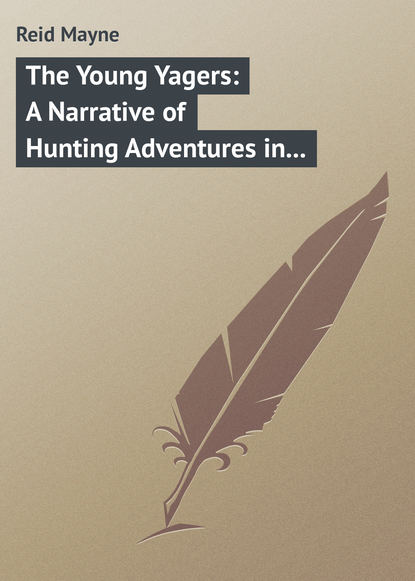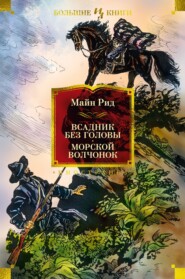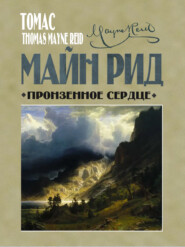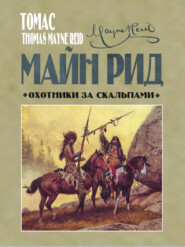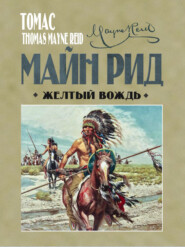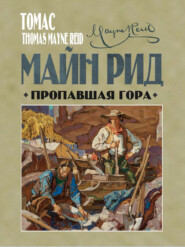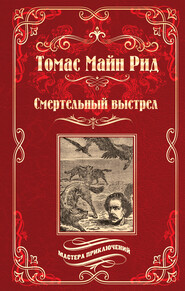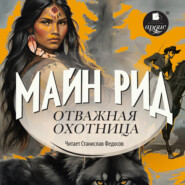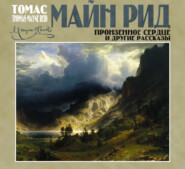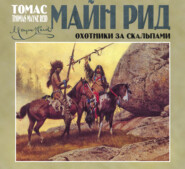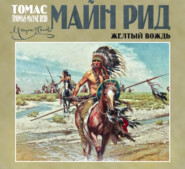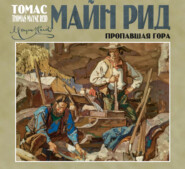По всем вопросам обращайтесь на: info@litportal.ru
(©) 2003-2024.
✖
The Young Yagers: A Narrative of Hunting Adventures in Southern Africa
Настройки чтения
Размер шрифта
Высота строк
Поля
But the principal security of the ostrich lies in its splendid power of vision, combined with its peculiar habitat. It is always on the naked plain, with nothing to interrupt the view, and its keen eye enables it to perceive an enemy long before the latter can get near enough to do it an injury. So sharp is its sight, it can see even farther than it can be seen, large as it is!
A most difficult matter it is to get within shooting distance of these wary birds. Sometimes a shot is obtained by lying in wait for them at vleys, or springs, where they come to drink. Many people deny that they ever drink, as they are met with at great distances from water; but it should be remembered that what may appear a great distance to a tired traveller may be nothing to a fleet ostrich, who can fling the miles behind like a race-horse.
Others have observed the ostrich come to drink at a particular place once every day; and it is well known that in captivity they swallow large quantities of water. After drinking they do not run so well, and hunters take advantage of this and run them down after leaving the pool.
There are hunters residing upon the desert karoos, who hunt the ostrich as a profession. The feathers are of considerable value, as well as the skin, which is tough and strong, and tans into a fine species of leather, out of which jackets and other garments are made. A skin without the feathers is worth about one pound sterling; and the long white plumes of the wings and tail, – of which there are five-and-forty (the finest are from the wings,) – are often sold for a shilling apiece on the spot.
Groot Willem observed that the ostrich may be easily domesticated, and he had frequently seen tame ones about the kraals of the frontier boors. They are a useless pet, however; and, although quite harmless as far as man is concerned, they become troublesome in the farm-yard, where they trample the poultry to death, and sometimes gobble up chicks and young ducks, not from any carnivorous propensity, but on account of their extreme voracity: an old rag would be swallowed in the same way.
The proper food of the ostrich is tops of shrubby plants, with grain and seeds, though they “bolt” many odd and indigestible substances. They are fond of salt, like most wild animals, and are often seen in large flocks around the salt-pans, or “salines,” many of which exist upon the desert plains of Africa.
The flesh of the young ostrich is very palatable, but that of an old bird is rather tough and rank. Their eggs, however, are esteemed a delicacy, though some think them heavy.
The voice of the ostrich under ordinary circumstances is a deep sonorous chuckle, though at times it gives out a roar resembling that of the lion. When wounded or brought to bay, it hisses like an enraged gander.
So much for the ostrich; and now Hans proceeded, as he had promised, to say a word or two about its relatives.
The “rhea” is its South American representative, but it has been lately discovered that there are two distinct species in South America, the “nandu,” (Rhea Americana), and the “petise,” or Darwin’s rhea, (Rhea Darwinii). They resemble each other in form, colour, and general habits, but differ in size and geographical range. The nandu is the larger, and dwells upon the wide plains of La Plata, whereas the petise is confined to the southern part of Patagonia.
The nandu resembles the African bird in form, and its dingy brown colour is not far from that of the hen ostrich. Its size, however, is much less, being only five feet in height. The plumes of its wings are less beautiful and valuable than those of its African cousin, though they are also a marketable article, being used for fly-brushes and other household implements.
The habits of the rhea show a great similarity to those of the Struthio, and it is quite a folly to make separate genera of them.
The rhea is gregarious, polygamous, scoops a slovenly nest in the ground, hatches from twenty to thirty eggs, scatters many others around, runs swiftly when pursued, hisses and kicks violently when assailed, and is shy and wary. All these are habits of the ostrich. The rhea, however, has some peculiarities. It feeds upon small fish cast up on the mud banks of rivers, and on roots and grass. It also takes freely to the water, and can cross rapid streams by swimming. The gauchos hunt it with both lazo and bolas.
Darwin’s rhea is less in size, but very similar in colour, form, and habits. It also swims well, and frequents plains near the coast. It is beyond doubt a very closely allied species to Rhea Americana, but a bird of a colder habitat.
The nandu is not found in North America, nor any species of bird allied to the ostrich. In this respect Nature has neglected the vast desert plains of prairie-land.
Even in South America the range of the rhea is limited, and does not extend to the equator, though it comes much farther within the tropics than is generally imagined. It has lately been seen on the savannahs of the Madeira River, far to the north of the La Plata plains.
Another cousin of the ostrich is the “emeu,” (Dromanis Novae Hollandiae). I give the clumsy title of the closet-naturalists, though there is no reason in the world why this bird should be separated from the genus of either ostrich or rhea, except to confuse the student of natural history.
In form and habits it resembles both, and in colour it is quite like the rhea. It is, however, a much taller bird – standing seven feet – and a full-grown male approaches the standard of a hen ostrich.
It has all the characteristics of the ostrich – is gregarious, polygamous, nestles on the ground, shy, wary, runs swiftly, swims well, kicks so as to kill a dog or break the leg of a man, utters an odd drumming note, and lays eggs nearly as large as those of the ostrich, but of deep green colour. The eggs of the rhea are of a bluish cast.
It is supposed that, like the rhea, there are two species of emeu – another and smaller one having been reported as existing in the northern parts of the great island of Australia.
In the peninsula of Malacca and the islands of the Asiatic Archipelago, the ostrich has a representative that differs from it more than either rhea or emeu. This is the cassowary, (Cassuarius cassoar). Its body is covered with a thick coat of feathers of a deep black colour, and so disposed as to present a hairy appearance, while its head and neck are naked, the skin of these parts being of the loveliest blue-purple and scarlet blended together.
The cassowary differs from the ostriches in many respects. It is not a bird of the desert, but dwells in fertile districts and feeds upon soft succulent herbage. It resembles the ostriches, however, in most of its habits. Like them it defends itself by kicking, deposits its eggs on the ground, and leaves them to be hatched by the sun; is bold when assailed, is fleet and strong, and altogether may be regarded as one of the most interesting of the tribe, or of birds in general.
Hans mentioned the “apteryx,” or kiwi-kiwi, only to say that there were two species of it very much alike, both natives of New Zealand, both nocturnal and burrowing in their habits; and Hans added that he did not regard them as belonging to the ostrich family at all, any more than the “auks” or “penguins.” Thus ended the talk about the wingless birds.
Chapter Thirteen.
The Fennec and the Ostrich-Eggs
Before retiring to rest, the young yägers had resolved upon a pleasant performance for the morrow – that was, a “surround” of the ostriches. They had planned it that Hendrik and Groot Willem should go first, and ride a large circuit around, so as to get far beyond the nest. Arend and Hans would start shortly after taking different sides, while Klaas and Jan should cover the direction towards the camp. In this way the six, widely separated from each other, would enclose the birds in a circle; and when the latter became alarmed and started to run, they were to be “headed” by whoever was nearest, and turned back to the opposite side. This is the mode practised by the South African hunters, and is the only way by which the ostrich can be tired out and run down, for on such occasions, if the “surround” be well managed, the bird becomes confused, runs from one side to the other, and at length suffers itself to be captured or shot. It is a dangerous matter, however, to approach too near the game even when “blown” or wounded. A wounded ostrich has been known to send the hunter sprawling, and break a leg or an arm, or a pair of ribs, by one fling of its muscular limb! Hans, in his usual prudent way, had cautioned his companions to beware of this danger.
They all went to rest with feelings of pleasant anticipation for the morrow. They had high hopes they would either kill or capture the old cock, and pluck his snow-white plumes to add to their “trophies.”
The only drawback upon their plans appeared to be their number. They had doubts whether six could surround the ostriches, so as to head and turn them – especially as of the six two were little boys mounted on small ponies, for the chargers ridden by Klaas and Jan were of this character.
It was resolved, however, that Congo and Swartboy should help to form the circle. They had no horses, but both were active afoot, and either could run quite as fast as the ponies. The one armed with his assegais, and the other with his tiny bow and poisoned arrows, they would be well worth a place in the ring; and the ostriches would thus have eight, instead of six, points in the compass closed up against them. Add to this, that there were the six buck-dogs to assist them, and it will be acknowledged that their prospect of capturing the ostriches was not so bad.
Sad to say, their hopes of a brilliant day’s sport ended in complete disappointment. All their fine plans were frustrated by a singular occurrence.
A hyena during the night had stolen into camp, and had eaten up the girth and part of the flaps of Hendriks saddle; and before the damage could be repaired the ostriches had gone off from the nest.
They were still around it when the hunters arose, but the delay in mending the saddle was fatal to the plan of a “surround.” The morning was a hot sultry one, and the birds leaving their business to the sun, went early away. Just as the boys were mounting, they saw them move off in long strides towards the opposite side of the plain.
They were soon out of sight of the naked eye; but Hans followed them with his glass, until that also failed to keep them in view.
It was a great disappointment to everybody, just as it would be to a field of fox-hunters, who, after getting into the saddle, had found themselves driven back to their stables by frost and snow. Hendrik was particularly out of temper, on account of the ill luck that had befallen his saddle; and if a hyena had shown itself at that moment, it would have stood a fair chance of getting a bullet into its body. All the others, though in a less degree, shared Hendrik’s uncomfortable reflections.
All six sat chafing in their saddles, not knowing what to do.
“Let us ride out to the nest,” proposed Arend. “At all events, the eggs have not ‘stole away.’ We’ll get them, and, by the way, I shouldn’t object to an omelette for breakfast,” (they had not yet breakfasted:) “I’m tired enough of venison and dry biltong. What say you?”
“By all means,” rejoined Groot Willem; “let us bring in the eggs, and breakfast on them – that is, if they’re not too far gone. I should like an egg for breakfast myself. Come on then!”
“Stop!” cried Hans; “stop a moment, yägers! Perhaps we’ll not be disappointed – we may have a chase yet.”
Hans had the glass to his eye as he spoke.
“What!” inquired several; “are they coming back?”
Hans made no reply for a moment. He could not be looking after the ostriches. His telescope was pointed in the direction of the nest. The birds were not there!
“It is it! – it is! the very creature itself!” exclaimed Hans, in a half-soliloquy.
“What is it? what creature?” demanded the boys.
“The fox!” replied Hans.
“What fox!”
“Why, the fennec – the same I saw last night – yonder it is, though you can’t see it with the naked eye. I can barely make it out with the glass. It is up close by the nest of the ostriches, and appears busy about something.”
“The eggs, I warrant,” suggested Groot Willem.
“A fox-chase! a fox-chase!” exclaimed Hendrik, partially recovering temper.
“A fox-chase!” echoed Klaas and Jan.
“A fox-chase be it then,” assented Hans; and all six set their horses in motion, whistling to the buck-dogs to follow.





